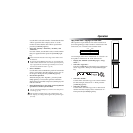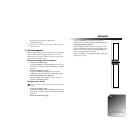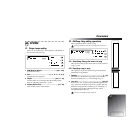
Operation
54
return to Locate mode, disconnect the USB cable from
the PXR4.
2. Saving song files via card
Even if your computer does not have a USB connector,
you can use a commercially available card reader to back
up the data from the card.
1
Turn off the power of the PXR4, and remove the card.
(
→
p.12)
2
Insert the card as described in the manual of your
card reader.
3
Back up the data onto your computer.
If data is copied to a card of a different size than the card on
which the song was created, the Undo data may be lost.
Contents of the card
The root directory of the card may contain the following
files and folders.
1. Song folders
The PXR4 manages each song as a separate folder. As
a rule, the folder name will be the same as the song
name, but if you create identically-named songs, the
folder name will consist of the song name plus a
tilde
(
~
) and
numeral; e.g., “
~
1”, “
~
2.”
The folder will contain the audio data files for each
track, and a song management file.
When copying a song from a card to your computer, or when
writing a previously-copied song back to the card, you must
copy the entire folder.
If you modify or delete part of the files in a folder, it will no
longer be possible to handle the song correctly.
If you change the name of a folder, the new folder name will
be the song name. Although it is possible to use a tilde (
~
) in
the file name, the tilde and subsequent characters will not be
displayed in the song name.
2. Stereo MP2 songs (*.MP2)
Stereo MP2 songs created by the Bounce operation are
generated as stereo-format MP2 (MPEG1 Audio Layer
2) files. By copying these files to your computer, you
can listen to the songs on your computer, or distribute
them.
If you are using a sound card that does not support a 32 kHz
sampling rate, playback may not be possible.
3. Effect user file (1.EFF, 2.EFF)
These files are created when you create or save user
effect data. The filenames are “1.EFF” and “2.EFF”.
4. Setting file (PXR4.INI)
A file containing settings is created with a name of
“PXR4.INI”. This file contains the number of the song
that is currently being edited on this card.
The presence or absence of this file will not affect the opera-
tion of the PXR4. If this file does not exist, the first song will
be used.
5. Card recovery results (CDRECVRY.LOG)
When you use the Card Recovery (→p.62) function,
Load a file
Save a file
Load a file
Save a file
PXR4


















